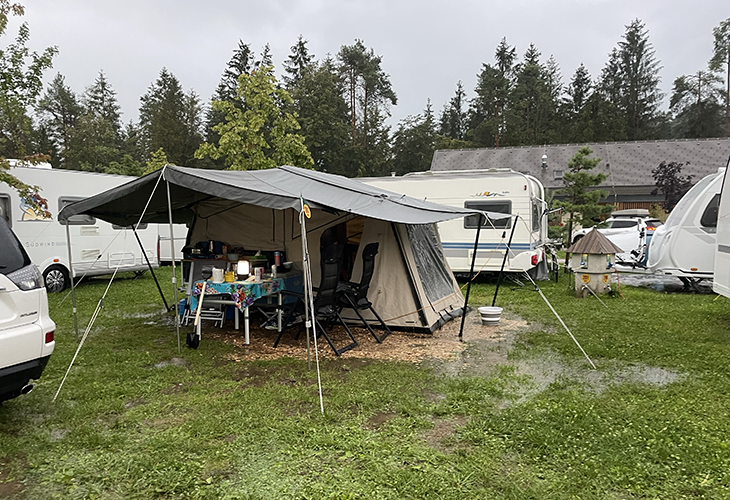Martine van der Klauw
EditorInvullen

Whether you're on a grassy field, standing on rocky ground, or have your feet in the clay, choosing the right peg for your (awning) tent is very important. After all, you want to prevent your gear from flying off with the first gust of wind. Each type of ground requires a specific peg. But when do you use which peg? We’ll lay it out for you.
When you buy a tent, you usually get a set of standard pegs. These are often made of steel or aluminum, which makes them very versatile. These pegs are perfectly suitable for camping on soft to medium ground, such as grassy fields or soft clay soil. They work well for securing a small tent, groundsheet, or inner tent. However, if you want to anchor an awning, canopy, or large tunnel tent, you’ll often need something more heavy-duty.
They used to be very popular, but as of 2024, you don’t see them very often anymore. These pegs are usually made from beech or maple wood and are relatively large and heavy. When should you still consider taking them? When you’re camping on ground that isn’t very firm, such as sandy dunes.
These are lightweight and available in all the colors of the rainbow. Plastic pegs are less strong than metal ones, but still strong enough to secure your awning and canopy. Be careful when using them on hard ground, as they tend to break relatively easily.
This type is also suitable for firmly securing awnings and canopies to the ground. Metal pegs often have ridges or are angled in shape, which gives them better grip in the soil. This type of peg is particularly well-suited for camping on clay or heathland soil.
If you’re pitching your tent on hard, rocky ground, rock pegs are essential. They’re extremely strong and can take a beating. Driving these pegs into the ground is easier than getting them back out, so be sure to bring a peg puller. Be careful not to step on the rock pegs. You wouldn’t be the first to badly cut your toe.
As the name suggests, you can screw these pegs into the ground. If you can’t do it by hand, you can use a drill. Strong grip guaranteed. Screw pegs are not only very strong, but also very lightweight. And that’s a great bonus, as your camping gear is already heavy enough.
The spiral shape of these pegs provides grip in loose ground. They are typically used when camping in sandy soil.
If you’re using a storm strap, you’ll need special pegs for this. These pegs are reinforced and made of thick metal, and they feature a loop to attach the storm strap spring. They are about 40 centimeters long, and you’ll definitely need a hammer to drive them securely into the ground. Once they’re properly in place, they stay firmly anchored.
These pegs are especially suitable for use in grass, clay, or woodland soil. The T-shape of these pegs provides extra grip. They are also strong and won’t bend easily, so you can safely drive them into the ground with a hammer.
Always bring a variety of pegs with you, even if you’re going to the same campsite. A period of prolonged rain or drought could have changed the ground structure. If you don’t want to bring different types of pegs, ask the campsite in advance about the type of soil.
Don’t forget a hammer. A claw hammer is sufficient for metal pegs and ground stakes, but for all other types, a rubber mallet is recommended. A peg puller is also a useful tool. It makes removing pegs easier and prevents damage.
Still unsure about which pegs you need? Ask your camping store for advice!
Spotted an error? Email us. We appreciate it!